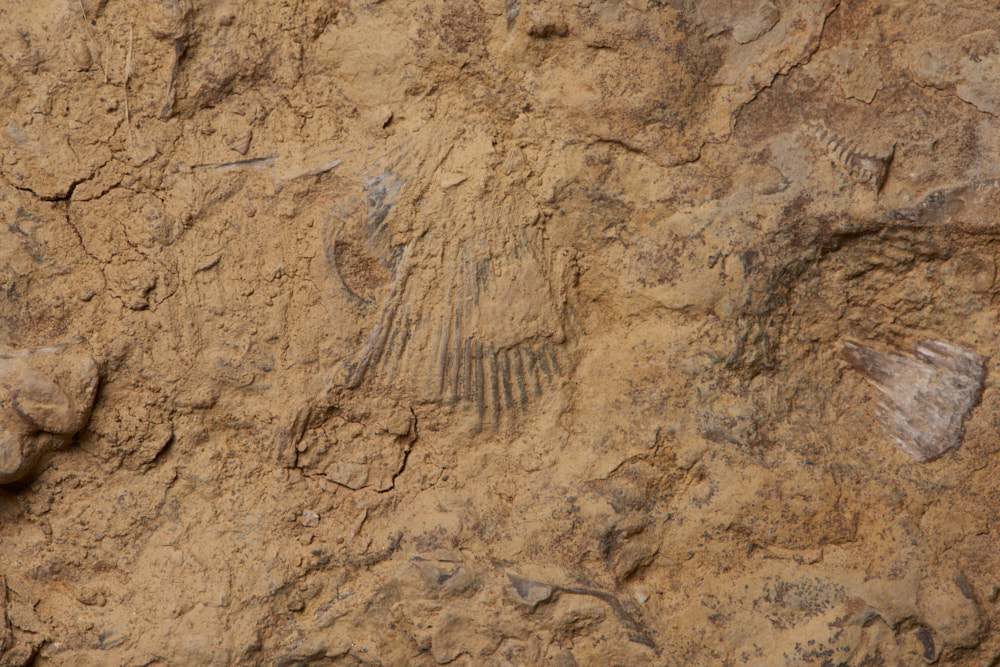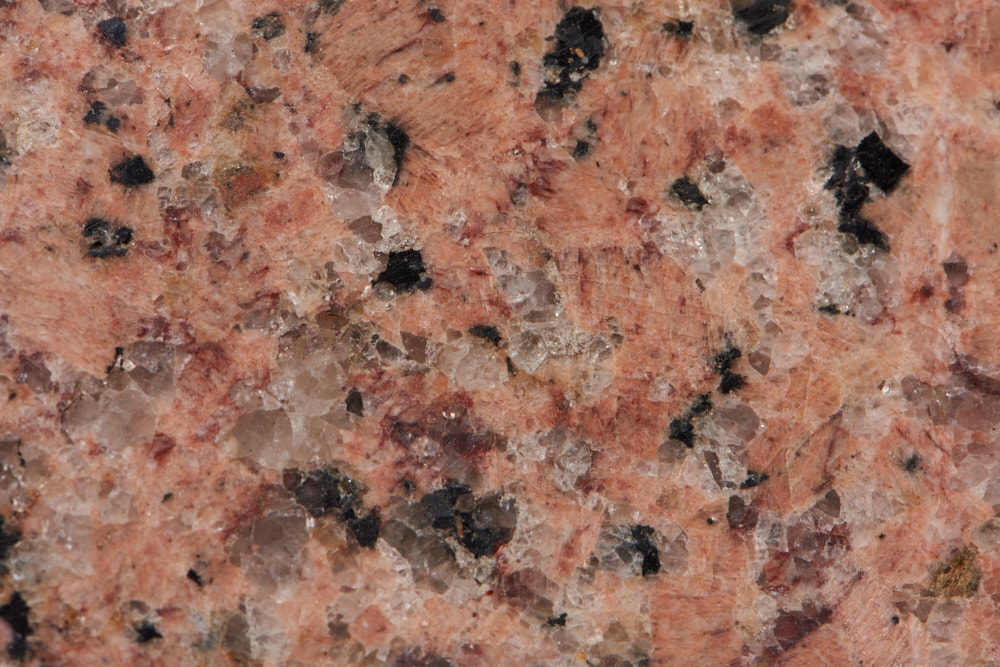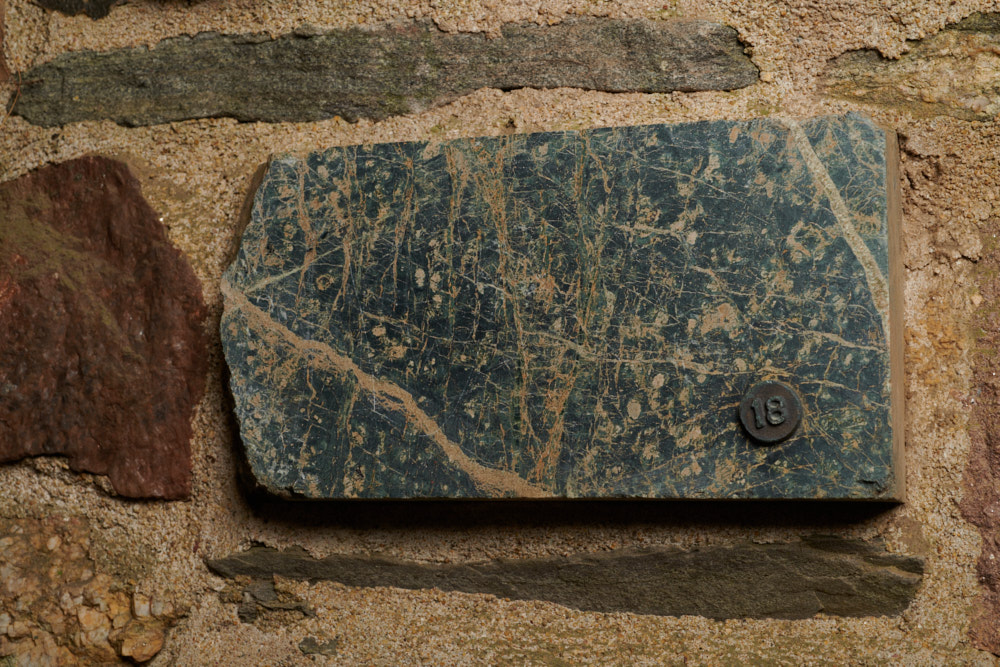The Stone Pavilion Project
Ancient Worlds

The specimen stones were created in wide range of ancient environments and climates, reminding us that constant change is a constant of Earth history.
Each actual stone on the exhibit wall is one apex on a conceptual triangle. The second apex is a geographic place: the U.S. state the stone was sampled from. The third apex is a modern environment somewhere on Earth today that is similar to the ancient environment of the stone. For example, Specimen #15 came from Kentucky, but was created in a tropical marine lagoon similar to that of the Florida Keys today.

Fossils and Mass Extinctions
Consider these three examples from the collection.
-
Arizona's specimen (#2) is from its Petrified Forest National Monument. Geologically, it's from the Chinle Formation deposited during the late Triassic Period (218-202 Ma). Ecologically, it reveals lush floodplain vegetation in a strongly monsoonal climate. Leached volcanic ash likely provided the dissolved silica needed to preserve the stone. The red color is the mineral jasper, indicating deep oxidation during seasonal drought. A major extinction was imminent.
-
The Devonian coral from Iowa is called a favosite (#13). Dating to roughly 448-251 million years ago, this extinct group built reefs similar to those of today, but with a completely different fauna.
-
Hash of extinct Paleozoic shells from Kentucky (#15, photo above) showing extinct snails and brachiopods. This was once the floor of a shallow sea that covered the central United States.
Ancient Climates and Environments

Tropical seas and beaches.
-
Arkansas's Paleozoic grainstone is a sandstone made of limestone grains. It formed by shoaling sandy beaches like those of tropical shores today.
-
Florida's Ocala Limestone (#8), a silicified Eocene shelly hash. Florida has been limy and shelly for tens of millions of years.
-
Illinois's silicified limestone (#11) reveals a Paleozoic shallow sea.
-
Indiana's Salem Limestone (or stand-in, #14), formed by shoaling tidal sands and beaches moving carbonate sand.
-
Kentucky's shelly bottom (#15) points to when the mid-continent was submerged beneath shallow seas.
-
Pennsylvania's Oriskany Sandstone (#36) is a land-derived beach sand, usually with abundant shelly fossils. Imagine coastal plains wider than today's.
Coastal Plain Deltas

-
The Crab Orchard sandstone of Tennessee (#40) indicates a broad sandy barrier-delta system with beach, back barrier, tidal flat and tidal channel sands, Lower Pennsylvanian
-
The unnamed specimen from West Virginia (#46) was described by the survey as a "flaggy fluvial sandstone" likely from one such delta.
-
A very ancient one is the protolith of the Baraboo Quartzite of Wisconsin (#47).
Inland Rivers, Lakes, and Swamps
-
Arizona's (#2) Petrified Forest.
-
Newark supergroup of rift in New Jersey (#28) and Connecticut (#6) (NHHarkose).
-
Western redbeds of Oklahoma (#34), Permian terrestrial sandstones.
Desert Sand Seas (ergs)
-
Aztec Sandstone ((#26) from Nevada is a quartz-rich eolian sandstone, correlating with more famous early Jurassic Navaho Sandstone of the Four Corners region of Utah, Colorado, Arizona, and New Mexico.
-
Navaho Sandstone (#42) from Utah, a hard pink sandstone or quartzite.
Ice Ages & Glaciation
-
Transported glacial erratics of Kansas (#14), North Dakota (#32), and likely Minnesota (#20).
Active Vulcanism
Continental Rift Vulcanism
-
Young gas-rich basalts from California's (#4) desert and probably New Mexico's (#29) Carrizoza plain, which is only ~5,000 years old.
-
Hydrothermal circulation associated with vulcanism, Connecticut's (#6) barite breccia.
Mantle Hot Spot Vulcanism
-
Cobble of Hawaiian basalt (#50) from one of its many beaches. This magma is derived from the mantle, delivered by hotspot melting.
-
Lava flow the Snake River Plain (Idaho #10), which is adjacent to world's best exposed Large Igneous Province, LIP - the Columbia River Basalts, which had 350 flows between 16.7-5.5 Ma, covering 210 k km2.
Mountain Building and Uplift

-
Pike's Peak Granite (#5) - Highest peak in the Mountain State of Colorado floats high in crust as a Proterozoic basement uplift like the Adirondacks.
-
Delaware's Brandywine Blue Gneiss (#7) - the Ordovician uplift of the Appalachians, then as massive and towering as the Cordillera.
-
Maine's Devonian Acadian orogeny (388-414 Ma) creating Kahtadin Granite (#17).
-
Quincy Granite (#19) from MA (or Milford, Chemslford) indicates Lower Devonian (390 Ma) mountain building.
-
Undeformed quartz vein from NH (#27) is likely from White Mountain Magma Series, Cretaceous (180-120 Ma).
-
Classic molasse of Massillon Sandstone ((#33) from Lower Pennsylvanian of Ohio contains the debris of the continental collision creating the Appalachians.
-
Henderson gneiss of South Carolina (#38) is orogenic plutonic root of Ordovician age (460-450 Ma).
-
Vermont, a Devonian (364 Ma) intrusion, part of the New Hampshire Plutonic Suite.
-
Granodiorite from the deep railroad tunnel through the Cascade Arc.
Landscapes

Exfoliation Domes
-
Stone Mountain Georgia (#9), a Carboniferous intrusion 300-350 Ma during the early in-gathering of Pangea.
-
Llano uplift of central Texas underlain by Texas Pink (#41) is a bornhardt..
-
Mountain top "balds" of Ceasar's Head and Table Rock in South Carolina underlain by plutonic rocks, the Henderson Gneiss (#38).
Salt Domes
-
Salt dome uplifts in Louisiana (#16) bring Cretaceous to surface.